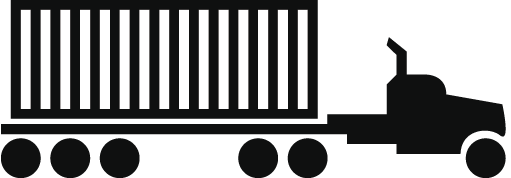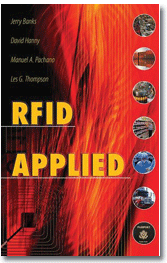RFID standards and supply chain applications
 Regulatory standards are useful to all types of business organizations and for governments. Standards can ensure the minimum level of product characteristics such as quality, interoperability, reliability, and safety for the user community. Recently, due to a wide industrial adoption of RFID, there is increased interest in standardization. In this article we introduce some RFID application standards and emphasize some supply chain management considerations.
Regulatory standards are useful to all types of business organizations and for governments. Standards can ensure the minimum level of product characteristics such as quality, interoperability, reliability, and safety for the user community. Recently, due to a wide industrial adoption of RFID, there is increased interest in standardization. In this article we introduce some RFID application standards and emphasize some supply chain management considerations.
International Organization for Standardization
International Organization for Standardization (ISO) is the world’s largest developer and publisher of International Standards. It is a network of the national standards institutes of more than 150 countries (one member per country) and enables a consensus to be reached on solutions that meet both the requirements of business and the needs of society. ISO standards are developed by ISO technical committees (TC) and subcommittees (SC) in the six-stage process of Figure 1. The activity in each stage is as follows:
Figure 1. ISO Standard Process
Stage 1 (Proposal stage): A new work item proposal (New Project) is submitted for vote by the members of the relevant TC or SC.
↓
Stage 2 (Preparatory stage): A Working Draft (WD) is under consideration. A working draft is forwarded to the working group’s parent committee for the consensus building phase.
↓
Stage 3 (Committee stage): A Committee Draft (CD) or Final Committee Draft (FCD) is placed under consideration. As soon as a first CD is available, it is registered by the ISO Central Secretariat and distributed for comment or voting. Once consensus has been attained, the text is finalized for submission as a draft international standard (DIS).
↓
Stage 4 (Enquiry stage): The DIS is circulated to all ISO member bodies for voting and comments within a period of five months. If it is approved, it is submitted as a final draft international standard (FDIS).
↓
Stage 5 (Approval stage): An FDIS is placed under consideration. The FDIS is circulated to all ISO member bodies for a final Yes/No vote within a period of two months.
↓
Stage 6 (Publication stage): Once the FDIS has been approved, the final text is sent to the ISO Central Secretariat which publishes the International Standard.
ISO/IEC 18000 Series
Among many ISO standards, the ISO/IEC 18000, ISO/IEC 15961~15963, ISO 17363~17367 Series and the ISO 18185 Series are important standards for the application of RFID. Among those standards, the ISO/IEC 18000 (RFID for Item Management) series was developed to determine the use of the same air interface protocols for most of the widely used frequencies (e.g., 13.56 MHz, 900 MHz). The series includes the following:
- ISO/IEC 18000-1: Generic Parameters for the Air Interface for Globally Accepted Frequencies:
- ISO/IEC 18000-2: Parameters for Air Interface Communications below 135 KHz
- ISO/IEC 18000-3: Parameters for Air Interface Communications at 13.56 MHz
- ISO/IEC 18000-4: Parameters for Air Interface Communications at 2.45 GHz
- ISO/IEC 18000-6: Parameters for Air Interface Communications from 860 to 960 MHz
- ISO/IEC 18000-7: Parameters for Air Interface Communications at 433 MHz
As shown, each part deals with different frequencies that can have different operating characteristics. The ISO/IEC 18000 series provides only a framework for developers to select options suitable for their application requirements. It is important for users to understand the contents of each part and to develop suitable application requirements considering the desired performance.
Among those standards, ISO/IEC 18000-6 is widely used for supply chain management because of its capabilities which satisfy general supply chain requirements such as a medium-range reading distance (around 3 to 10 meters), multi-read (or batch reading) capabilities, and the capability of high-speed item identification. On the contrary, ISO/IEC 18000-3 defines the air interface at 13.56 MHz which can only provide read capability at a short distance and only a single-read. But this might be a proper technology for personal identification.
Data Protocol Standards
Apart from standards on the air interface (e.g. ISO/IEC 18000 Series), each organization’s data structure and any format of data and language need to be supported. Note that multiple code structures (i.e., multiple tag frequencies) are used in many organizations. The purpose of ISO/IEC 15961, ISO/IEC 15962 and ISO/IEC 15963 is to provide a common data protocol that has no restrictions on frequencies used in applications and air-interface protocols and to describe numbering systems for the unique identification of RF (radio frequency) tags. ISO/IEC 15961 provides the data protocol application interface (parameters and commands for applications software). ISO/IEC 15962 provides data encoding rules and logical memory functions (processing of the data and its presentation to the RF tag). ISO/IEC 15963 provides unique identification (UID) of RF tags and the numbering system.
Performance Test Methods
The performance characteristics of RFID devices vary by application factors and particular RF air interfaces. Test conditions include the number of tags to be tested, distance, tag orientation, tag mounting material, and RF environment, among others. In the case of the ‘number of tags to be tested,’ 30 tags might be randomly chosen among a population of, say, 1000 functional tags. ‘Distance’ is between the antenna of the reader and the tag undergoing the test. ‘Tag orientation’ means that tags within a population may have specified polarization relative to the interrogator antenna (e.g., relative to the z-axis). It includes angular rotation in three dimensions (ψ, θ, and φ). The tests are performed in a known RF environment. For measurements of propagative UHF readers (ISO/IEC 18000-6, ISO/IEC 18000-7) an anechoic chamber is the recommended test environment. For measurement of inductive readers a typical laboratory environment is sufficient, where consideration is given to minimize the impact of electromagnetic sources that may influence the results.
E-seals
Since international trade is largely dependent on freight containers, a new standard for the technology used to track their movement has been developed. The standard (ISO 18185 Series or the E-Seal Standard) has a huge potential to minimize handling costs, improve inventory tracking and availability of accurate real-time information as well as to create a safe and secure international supply chain. It specifies a read-only, non-reusable freight container seal identification system (based on a radio-communication interface and ISO/IEC 18000-7) that provides a unique identification of the container seal, its status, and related information.
The standard specifies a system with the following features: a seal status identification system; a battery status indicator; a unique seal identifier, including the identification of the manufacture; and seal (tag) type. Figure 2 shows application of an example procedure for the e-Seal solution.
Figure 2. Example procedure of E-seal solution
Create & submit a manifest to a security organization
↓
Affix E-seal to a container before entering container terminal
↓
Scan E-seal data at the gate of container terminal. Also check the security status
↓
Receive feedback from central system for security
↓
Move a container cleared for security verification to container terminal
↓
Provide information to security authorities & track security status of container movement using application
↓
Rescan the sealed container before loading to a vessel for final security verification
↓
Load a secure container to a vessel
Supply Chain Applications
The supply chain is a multi-level concept that covers all aspects from raw material to a final product, to shipping to a final point of sale, use, or maintenance and potentially to disposal and/or return of the goods or remnants. Each of these levels covers many aspects of dealing with products and the business process for each level is both unique and overlapping with other levels. Many market and industry analysts predict that the supply chain will become a key application area for RFID.
Traditionally, the supply chain suffers from the bullwhip effect caused by inter-level information inaccuracy. It is anticipated that RFID can address such problem by providing companies with accurate information and real-time visibility across the supply chain.
- ISO 17363~7 standards pertain to supply chain applications of RFID. The series includes the following:
- ISO/IEC 17363, Supply Chain Applications of RFID—Freight containers
- ISO/IEC 17364, Supply Chain Applications of RFID—Returnable Transport Items
- ISO/IEC 17365, Supply Chain Applications of RFID—Transport Units
- ISO/IEC 17366, Supply Chain Applications of RFID—Product Packaging
- ISO/IEC 17367, Supply Chain Applications of RFID—Product Tagging
The standards define the technical aspects and data hierarchy of supply chain management information required at each layer of the supply chain, as shown in Figure 3.
Figure 3. Supply Chain Application of RFID with relevant standards

Movement Vehicle (Truck, Airplane, Ship, Train)
Layer 5
ISO TC 104
IATA

Container (e.g.; 40′ Sea Container)
Layer 4 (433 MHz, 860-930 MHz)
ISO TC 104 (ISO 18185)
ISO 17364 (122/104 JWG)

Unit Load “Pallet”
Layer 3 (433 MHz, 860-930 MHz)
ISO 17364 (122/104 JWG)

Transport Unit
Layer 2 (860-930 MHz)
ISO 17365 (122/104 JWG)

Package
Layer 1 (860-930 MHz)
ISO 17366 (122/104 JWG)

Item
Layer 0 (860-930 MHz)
ISO 17367 (122/104 JWG)
The standards address minimum performance requirements for the supply chain from item level tagging to container level tagging while meeting the standards for air-interface and the communication protocol of ISO/IEC 18000 and the standard for command messages of ISO/IEC 15961-2.
Minimum performance requirements may vary for different functional applications of RFID. However, the standard gives a fairly good guideline for the performance requirements for passive tags operating in supply chains with their usage as shown in Table 1.
Table 1. Minimum requirements for passive tag performance
| Passive Technology | |||
|---|---|---|---|
| Parameter | High-Speed Sortation | Handheld | Portal or Dock Door |
| How far? Minimum read distance |
1 meter | 0.5 meter | 3 meters |
| How fast? Maximum item speed when read |
16 kph | <2 kph | 15 kph |
| How much? Amount of data per tag |
256 bits | 256 bits | 256 bits |
| How many? Effective measure of tag data transfer rate and ability to perform anti-collision |
200 tags/second | 50 tags/second | 500 tags/second |
Conclusion
Because of the nature of RFID, the conformance requirements extend to particular regulatory demands with respect to electromagnetic spectrum usage. These regulatory aspects can differ between countries in addition to the basic technology standard. As a consequence national regulatory specifications and technical standards can be barriers to global trade.
Widespread implementation of RFID technologies requires the support of international standards to offer business benefit for international usage. In this article, we introduced RFID application standards that have been developed by ISO. We also introduced some activities that result in standards for the user community enabling wide-scale adoption of RFID technology, even though these were not started by ISO or other standard-making bodies.
ISO 18000-6 abstract: A glimpse into the verbose world of standards
ISO/IEC 18000-6:2004 defines the air interface for radio-frequency identification (RFID) devices operating in the 860 MHz to 960 MHz Industrial, Scientific, and Medical (ISM) band used in item management applications. Its purpose is to provide a common technical specification for RFID devices that may be used by ISO committees developing RFID application standards. ISO/IEC 18000-6:2004 is intended to allow for compatibility and to encourage inter-operability of products for the growing RFID market in the international marketplace. ISO/IEC 18000-6:2004 defines the forward and return link parameters for technical attributes including, but not limited to, operating frequency, operating channel accuracy, occupied channel bandwidth, maximum EIRP, spurious emissions, modulation, duty cycle, data coding, bit rate, bit rate accuracy, bit transmission order, and where appropriate operating channels, frequency hop rate, hop sequence, spreading sequence, and chip rate. It further defines the communications protocol used in the air interface.
ISO/IEC 18000-6:2004 contains one mode with two types. Both types use a common return link and are reader talks first. Type A uses Pulse Interval Encoding (PIE) in the forward link and an adaptive ALOHA collision arbitration algorithm. Type B uses Manchester in the forward link and an adaptive binary tree collision arbitration algorithm. The detailed technical differences between the two types are shown in the parameter tables.
The abstract defining ISO 18000-6 in the ISO online catalog.
This article is the twelfth and last in an ongoing series that explains the principles of RFID. It was created for RFIDNews by Yoon Seok Chang, Korea Aerospace University, Korea and Jerry Banks, Tecnológico de Monterrey, Monterrey, México.



